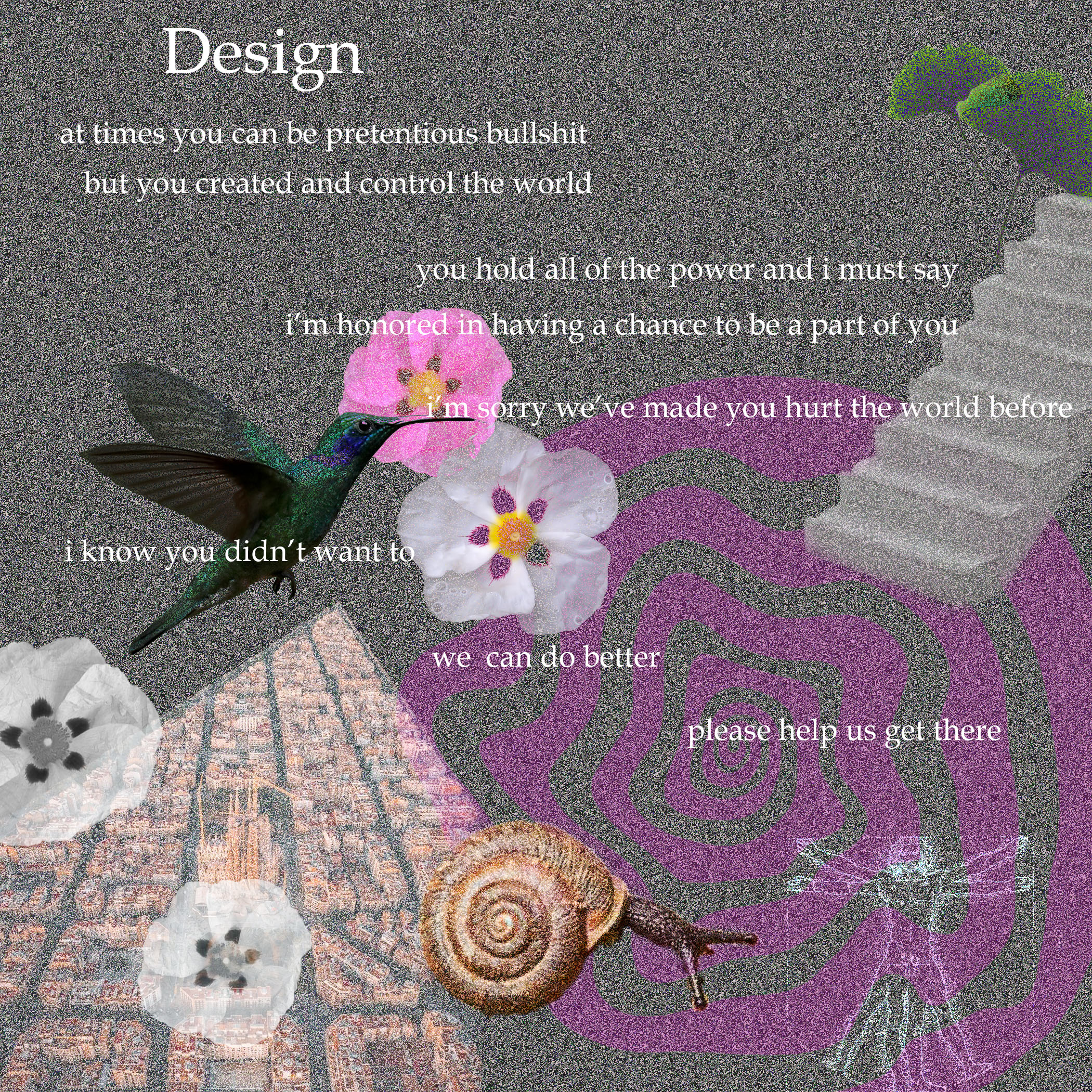Introduction 1/19
Tomas Diez, who leads the class of making sense and meaning, seems to be about many things, but one that may be easiest explained by the title itself. The course intends to connect students and their projects with themselves as designers. This is done through questioning, challenging, and learning from other professionals. The first class did seem a bit disjointed, but maybe I was having trouble focusing on zoom class after such a long break from school. We spoke about many people, design theories, and schools of design that I ended up a bit confused. I think this was ok though, as being exposed to all of this is an objective of the course itself. One thing that Tomas said that was interesting to me was that we operate within worlds and ways of seeing. I’m not exactly sure what that means still. My interpretation of it though, is that we are only able to think, or imagine (even if visually) in certain ways which may be dictated by our lived experiences, the certain “world” we’re exposed to, or influences that mark us. I believe these frameworks in which we can change, wish I hope happens for the better through this class as well as with the whole course. I think it can be transformative for myself. Before the class, I read part of This Is Distributed Design and the quote that really stuck with me from Tomas Diez was that “Each action we take is an act of design—both on a personal and collective level and within organizations or institutions”. He defines distributing design as “designing a democratic and conscious tool to empower innovators, creators, citizens, and people with ideas to make their individual and collective dreams come true”. After reading some of Tomas’ work, I feel that I really agree with the way he thinks and am curious to hear more from him. As he is the director of our course, I’m eager to get to know his perspective and see how he can push all of us as designers. Finally, after reading parts of Design as Participation by Kevin Slavin, I reminded myself how almost obscene design can be. This is demonstrated by the “Amazon move: absolute obfuscation of labor and logistics behind a friendly buy button. We’re just here to press the button”. We are so used to these systems that are in fact designed, but are completely backwards, yet we just accept them because they are what is most readily available, accessible, and offered to us. This points out the difference in design for participation vs. use, creating an emphasis on systems around us instead of individuals.
Tactical Tech 2/1
This week, we had speaker Stephanie Hankey on a virtual meeting for a discussion of her work and practice. Stephanie is, as stated by herself, a multi-faceted professional that is a designer, researcher, activist, and entrepreneur to name a few. She said that she often finds it hard to explain to people what she does. At the basis, with her NGO tactical tech, she explores technology and communication and its impacts. She is now more activism based and told us that we should be questioning the ways things are made. Stepahnie shared with us five roles design can have which are design as intervention, design as invitation, design as agitation, design as provocation, and design as catalyst. When discussing all of these, I saw how projects in MDEF actually incorporated bits of all of them, especially and explicitly design as intervention and design as agitation. It emphasized to me that these five points are where the strength of design often lies for me. To make movement, to make change. Each of them are powerful in their own way. By using them with tech, it kind of breaks down some barriers and makes it more approachable, which then allows people to take it one step further and interact with the topics in a new way. She explained to us some projects she has done such as Glass Room in which it is an exhibition style pop up space that uses analog forms to talk about digital things and reflect on technology. Using a store like this with something like a “genius bar” where people are actually trained to talk with visitors about the impact of technology almost seems satirical to me yet is a really smart idea. Using something people are familiar with and challenging what that really is. One of the takeaways I had from the discussion was the concept of backcasting, which is imagining a product in its lived state, problems, and designing for these problems beforehand. So often, when we have an end product in mind, we just think about how to achieve that as fast as possible and don’t spend time forecasting about the product and application. In a time where innovation moves so quickly, yet one where we can’t afford to make mistakes that have negative social or environmental impacts, backcasting is fundamental. Stephanie’s work, along with our development as students in the MDEF, promotes the idea and argument that design can be used to encourage people to both question and challenge our current systems while proposing solutions or alternatives to improve them.
Making Sense & Meaning Essay
